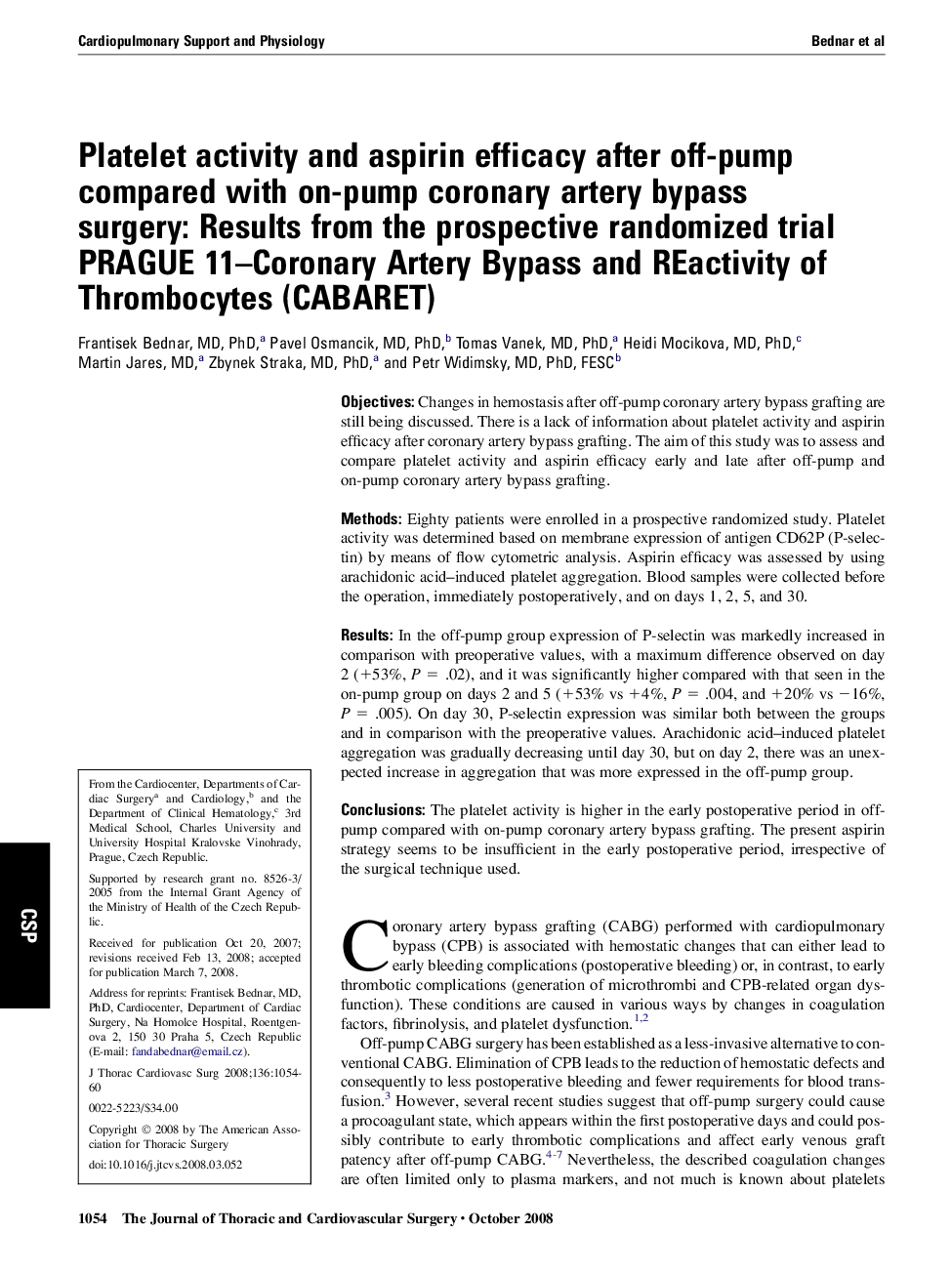| Article ID | Journal | Published Year | Pages | File Type |
|---|---|---|---|---|
| 2982812 | The Journal of Thoracic and Cardiovascular Surgery | 2008 | 7 Pages |
ObjectivesChanges in hemostasis after off-pump coronary artery bypass grafting are still being discussed. There is a lack of information about platelet activity and aspirin efficacy after coronary artery bypass grafting. The aim of this study was to assess and compare platelet activity and aspirin efficacy early and late after off-pump and on-pump coronary artery bypass grafting.MethodsEighty patients were enrolled in a prospective randomized study. Platelet activity was determined based on membrane expression of antigen CD62P (P-selectin) by means of flow cytometric analysis. Aspirin efficacy was assessed by using arachidonic acid–induced platelet aggregation. Blood samples were collected before the operation, immediately postoperatively, and on days 1, 2, 5, and 30.ResultsIn the off-pump group expression of P-selectin was markedly increased in comparison with preoperative values, with a maximum difference observed on day 2 (+53%, P = .02), and it was significantly higher compared with that seen in the on-pump group on days 2 and 5 (+53% vs +4%, P = .004, and +20% vs −16%, P = .005). On day 30, P-selectin expression was similar both between the groups and in comparison with the preoperative values. Arachidonic acid–induced platelet aggregation was gradually decreasing until day 30, but on day 2, there was an unexpected increase in aggregation that was more expressed in the off-pump group.ConclusionsThe platelet activity is higher in the early postoperative period in off-pump compared with on-pump coronary artery bypass grafting. The present aspirin strategy seems to be insufficient in the early postoperative period, irrespective of the surgical technique used.
